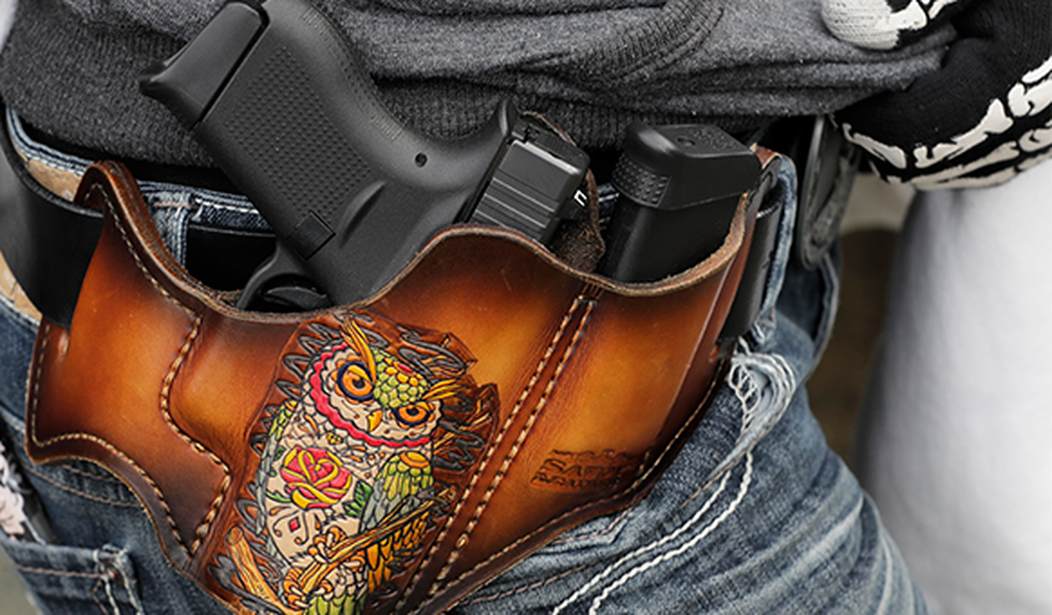So far no draft opinions have emerged in New York State Rifle & Pistol Association v. Bruen to give us an idea of what exactly the Supreme Court is planning to do with New York’s arbitrary and capricious “may issue” permitting system for concealed carry, but Democrats in the Empire State are anticipating that the current law isn’t long for this world.
That doesn’t mean, however, that the existing power structure in New York is going to willingly recognize the right to bear arms in self-defense outside of the home. In fact, we’re already seeing attempts to negate the right to carry emerge in Albany ahead of the Supreme Court’s decision, which is expected to be released in early June.
One measure that attempts to impose new limitations on the ability of New York gun owners to carry guns outside their homes has been introduced by Assemblywoman Jo Anne Simon, D-Brooklyn.
It calls for the prohibition of firearms on public transpiration, at large gatherings and at food and drink establishments.
After a gunman wounded 23 commuters on a Brooklyn subway train last month, Simon said such incidents demonstrate the need for concealed-carry restrictions to protect public safety.
Referencing the Supreme Court case involving the Rifle & Pistol Association, Simon said: “We should all be very clear that a finding of unconstitutionality is unacceptable and would make all New Yorkers extremely vulnerable, particularly in public places like subways, train stations and airports, houses of worship, bars, and other places.”
The tactic seems to be that if Democrats can’t ban the average citizen from obtaining a permit to carry, they’ll try to stop them from carrying wherever they possibly can.
In the Heller decision that overturned Washington, D.C.’s ban on handguns, Justice Antonin Scalia included a line that nothing in the ruling should cast doubt on prohibitions about carrying firearms in “sensitive places” like government buildings and schools, but it appears that Simon is trying to include as many regular public spaces as possible under the protective umbrella of Scalia’s phrasing. Public transportation? That’s a sensitive place. Restaurants and bars? Also too sensitive for the Second Amendment. Large gatherings? Way too sensitive for the right to keep and bear arms to apply.
The Independence Institute’s David Kopel wrote a lengthy piece not too long ago taking a closer look at the “sensitive places” issue, and I’d encourage you to read it when you’ve got a few minutes. This, however, seems to me to be the key point in rebutting the Democratic strategy post-Bruen. As Kopel argues, a “sensitive place” must be treated as such by the government. If it’s not, then the state is likely to have a very difficult time upholding its restrictions.
The government’s behavior can demonstrate the true importance of the alleged government interest. Passing a statute declaring some place to be a “gun free zone” does nothing to deter criminals from entering with guns and attacking the people inside. In contrast, when a building, such as a courthouse, is protected by metal detectors and/or guards, the government shows the seriousness of the government’s belief that the building is sensitive.
Screening and armed guards reduce the burden that is inflicted on citizens by locational arms bans. Disarmed, the citizen in a sensitive place cannot defend herself. But when there are metal detectors, the citizen is assured that criminals cannot bring in guns. When armed guards are present, the government takes the responsibility for having armed force at the ready to protect citizens.
Conversely, when the government provides no security at all—such as at the outhouse at the trailhead of the BLM land—the government’s behavior shows that the location is probably not sensitive. Further, the disarmament burden inflicted on citizens is not mitigated by alternative protectors supplied by the government.
Putting up a “gun-free zone” sign isn’t an indication that a particular location is indeed a “sensitive place”, in other words, and any attempt by New York to confine the right to carry to the wilderness and other out-of-the-way locations is likely to be met with another lawsuit and judicial smackdown. Hopefully it’s a moot point and the Bruen decision is strong enough to preempt this kind of infringement on the right to keep and bear arms, but it may be the best option available to anti-gun activists in the wake of the Bruen decision, and the idea is likely to find traction not only in New York but in other “may issue” states from Maryland to California as well.









Join the conversation as a VIP Member